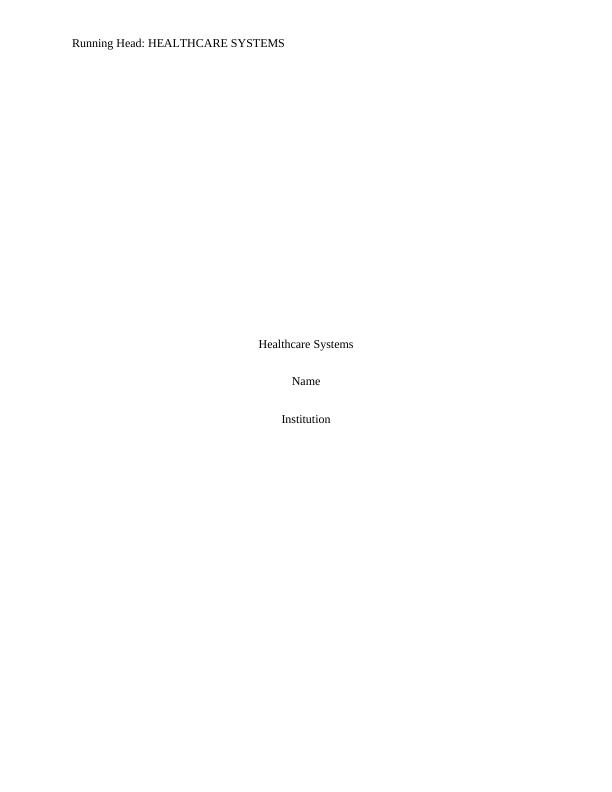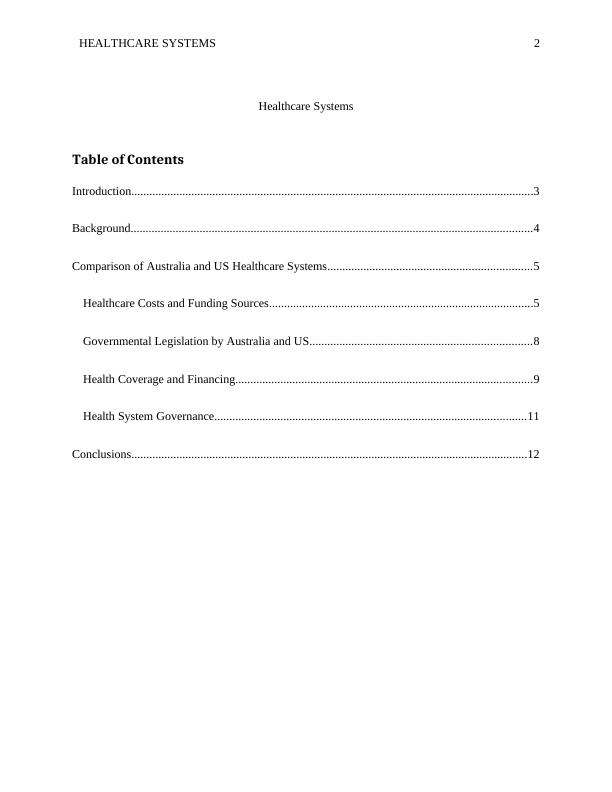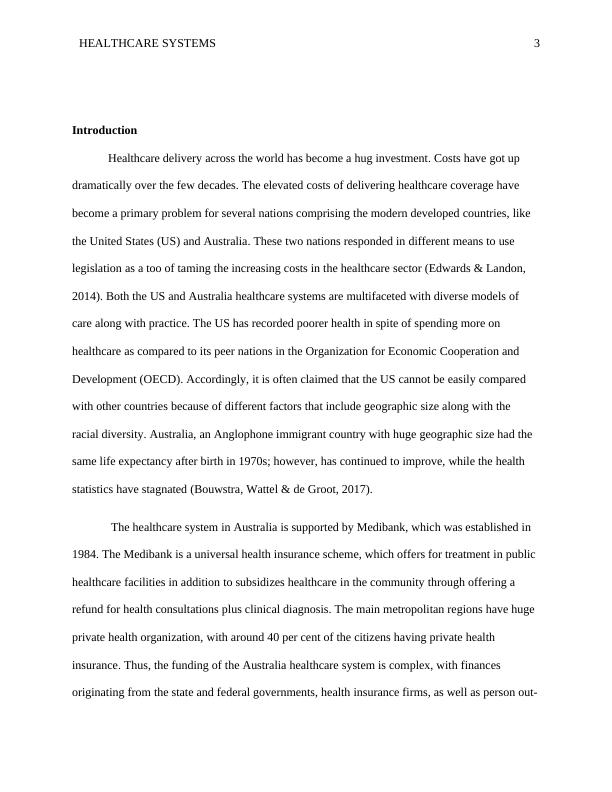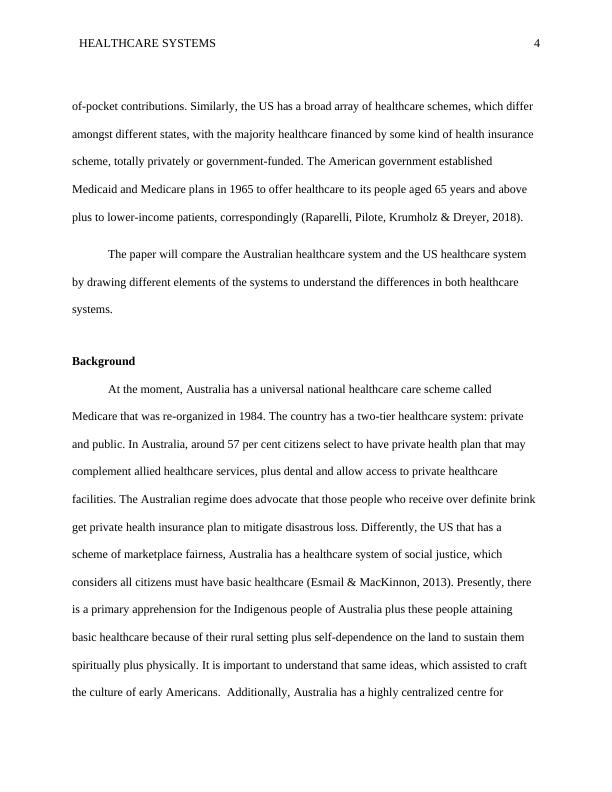Comparison of Australian and US Healthcare Systems
17 Pages4533 Words92 Views
Added on 2023-03-23
About This Document
This article compares the healthcare systems of Australia and the United States, focusing on healthcare costs, funding sources, government legislation, health coverage, and financing. It examines the differences between the two systems and their impact on healthcare delivery and accessibility.
Comparison of Australian and US Healthcare Systems
Added on 2023-03-23
ShareRelated Documents
End of preview
Want to access all the pages? Upload your documents or become a member.
Medicare in Australia: A Comprehensive Overview
|11
|841
|386
Comparison of Healthcare Systems in Australia, India and China
|16
|4236
|388
Healthcare Systems-USA vs Australia
|5
|1042
|62
Comparing Healthcare Systems: US and Germany Healthcare Systems
|8
|1755
|99
Financial Structure of Australian Healthcare System
|10
|2397
|1
Healthcare System | Assignment
|10
|2666
|14




